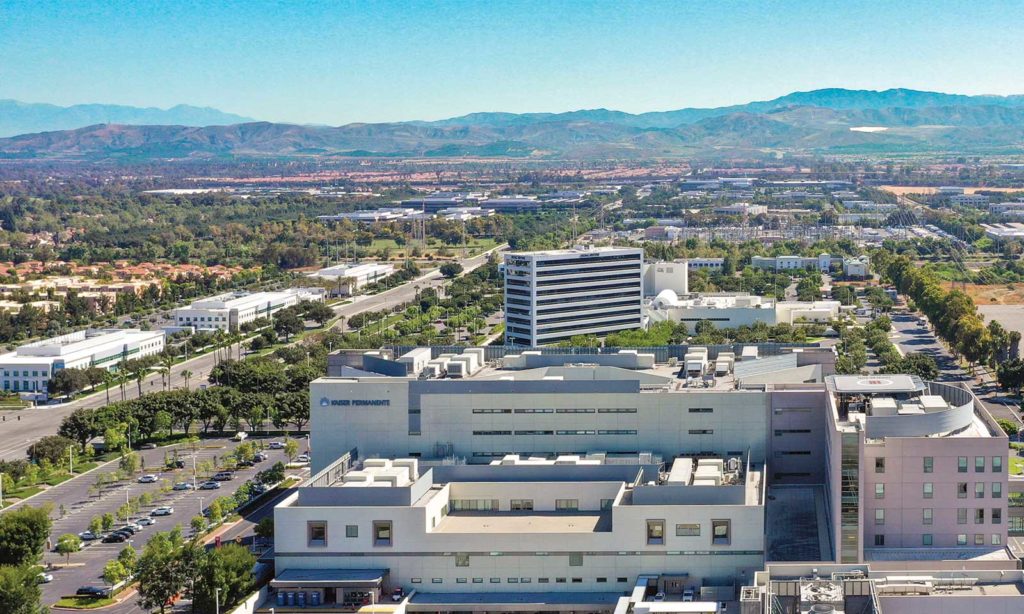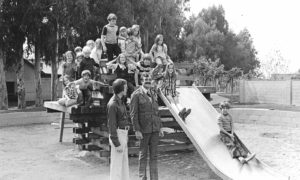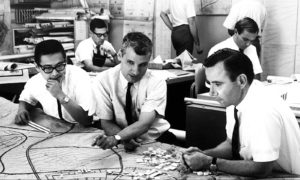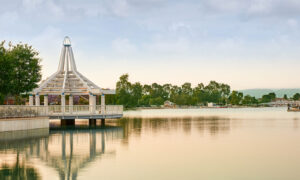
Samantha Merrifield is in excellent health, which is lucky for her family. With four kids, ages 6 months to 13, she’s always on the run. School drop-offs. Pediatrician visits. Grocery shopping. Target. All on top of the eight fitness classes per week that Merrifield teaches at her neighborhood park in the Village of Northpark.
Supporting her health, amid all that running, is her residence in Irvine – America’s largest master planned metropolis. Studies by the online research firms WalletHub and Niche routinely rank Irvine among the nation’s healthiest cities. This year, the American College of Sports Medicine weighed in, naming Irvine the fittest city in California and the sixth throughout the United States.
Merrifield is not surprised.
Having moved to Irvine from out of state in 2019, she says: “Right away I noticed that so many people here seemed so fit. There are parks on almost every corner, with people out biking and jogging. The weather is a factor, but the parks and trails make it easy to get outside and be active.”
Nearly 9 out of 10 Irvine residents live within a 10-minute walk of a park, according to the Trust for Public Land, which ranks Irvine eighth in the country for the quality, quantity and accessibility of its parks. Added to the city’s 277 community parks are some 57,500 acres of preserved open space, all close to home, guaranteeing that residents have plenty of opportunities to get out and move in the fresh air.

Merrifield’s husband, Royal, a pricing analyst for Disney, recently trained for a marathon by running on Hicks Canyon Trail. When his doctor encouraged him to get an MRI to investigate a pain in his leg, the family took advantage of another major way that Irvine supports residents’ health: with some of the nation’s best medical care.
World-class treatment – planned that way
Irvine has four large health centers, including Kaiser Permanente Orange County and Hoag Hospital Irvine. Those two major hospitals anchor the Sand Canyon Medical Corridor, which stretches nearly a mile from I-405 to Barranca Parkway and includes dozens of specialty care facilities.
Merrifield says she has been delighted with her pre- and post-natal care at Hoag, where “everything is new and state of the art, and just 10 minutes from my house.”
Irvine’s two leading health advantages share something important: the rare foresight behind the city’s decadeslong development. Irvine’s Master Plan began with a detailed blueprint in 1971 and has continued ever since.
The city’s Master Plan dedicates one-third of its area to parks, while designing its residential, commercial and office space to help residents avoid long, stressful commutes. Planners have also paid special attention to local health care facilities. In 1983, Irvine Company donated 15 acres for the city’s first community hospital, Irvine Medical Center, at the corner of Alton Parkway and Sand Canyon Avenue, simultaneously unveiling the design for a 400-acre medical corridor to surround it.
Multibillion-dollar upgrades
Irvine’s thriving health care ecosystem, which includes not just clinical care but advanced research in many fields, is now in the midst of a $4 billion expansion, testifying to both the region’s economic confidence and embracing of cuttingedge medical services.
Orange County Business Council President Jeffrey Ball says the investments elevate the city of Irvine into a league with much larger cities such as Boston and San Francisco. He credits Irvine’s “proper planning,” including strategic transportation corridors, with attracting the projects that will create hundreds of new jobs and serve people throughout the region.
At the University of California, Irvine, UCI Health has begun work on a $1.4 billion medical complex on Jamboree Road that will include a 144-bed hospital, surgical and emergency care, wellness programs and access to hundreds of clinical trials. UCI Health will also collaborate with Kindred Hospital Rehabilitation Services to build and operate a new 52-bed inpatient rehabilitation center on Von Karman Avenue.
In July, the City of Hope, on Barranca and Alton parkways, opened a new cancer outpatient center as part of a $1 billion expansion planned for completion in 2025. Patients will have access to the medical center’s 575 physicians and to nearly 1,000 clinical trials conducted every year, providing promising new treatments before they become mainstream. More than 500 patients and their families and community members provided input for the outpatient center’s blueprints, which include feng shui design, art galleries, a healing garden and integrative treatments such as acupuncture, massage and meditation.
Along the Sand Canyon Medical Corridor, Hoag is investing $1 billion to more than double the number of its hospital beds and nearly double its square footage. Three new institutes, focused on women’s health, cancer care, and digestive illnesses, are set to open in 2025, as part of what Hoag officials are calling a “wellness village.”
“We’re focusing on gardens and landscaping to make it beautiful in a way that can encourage healing,” says Danna Grant, Hoag senior vice president of advancement, who added that those aesthetics were part of a package that included hiring top medical professionals and integrating cutting-edge technology. “That’s in parallel with what Irvine offers as a community,” Grant says. “The city has been designed to be top-notch, and we’re aiming for that same standard.”
Hoag, UCI Health and City of Hope committed $4 billion to expand services.
Even without the coming improvements, Merrifield says her family has been “blown away” by Irvine’s health care, adding: “The doctors that we have seen and the facilities that they are in are hands-down the best that we have experienced.” Combine that with the parks and sports facilities, she says, and “it has been so easy to stay fit and healthy in a city that is so serious about wellness.”

community hospital. Today, Hoag and Kaiser Permanente anchor the corridor, providing award-winning medical care.










